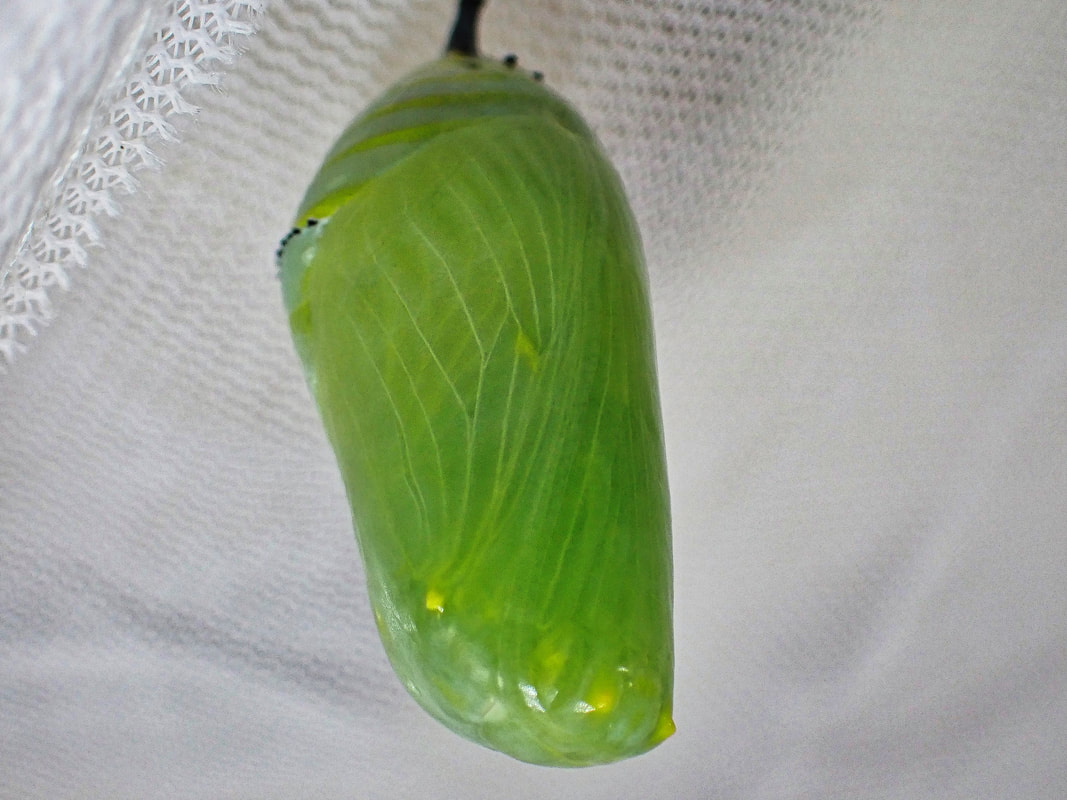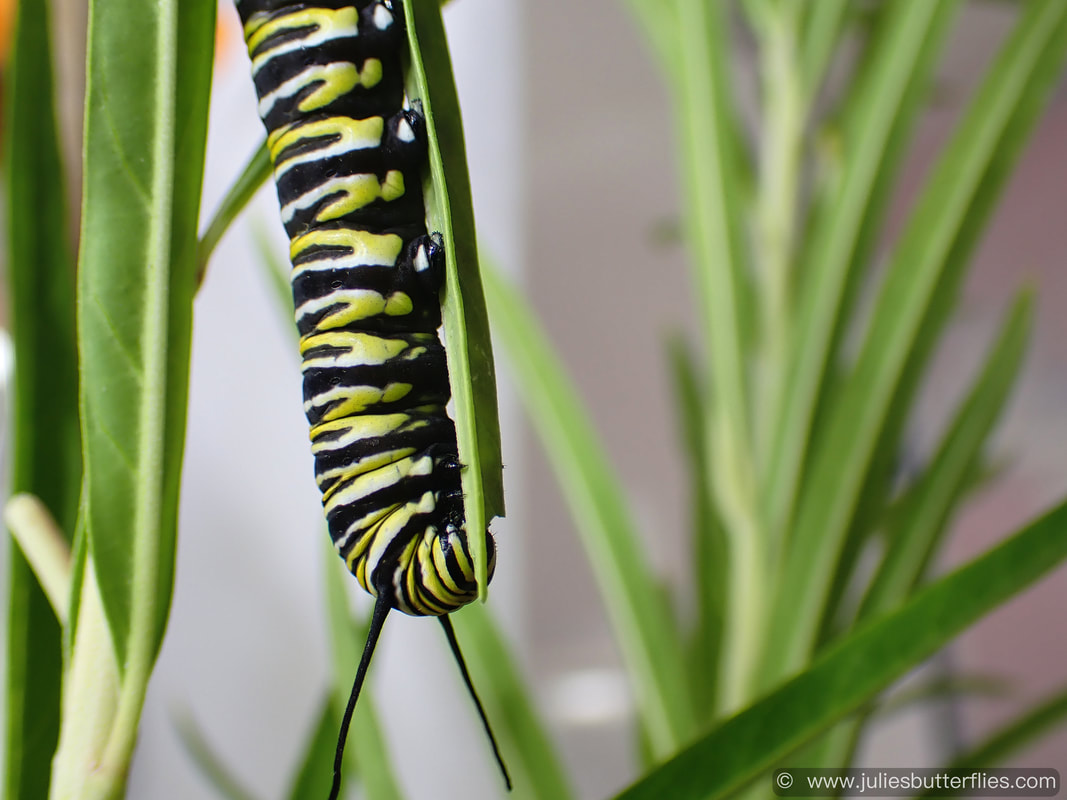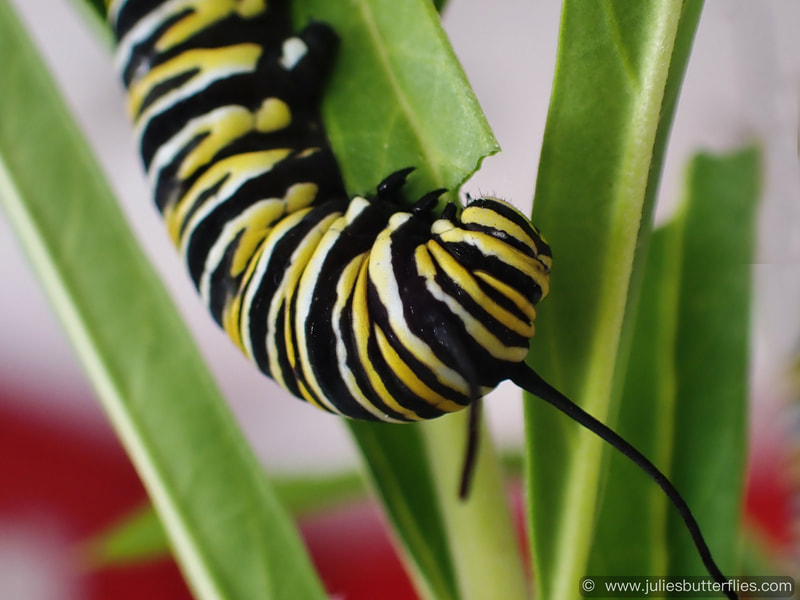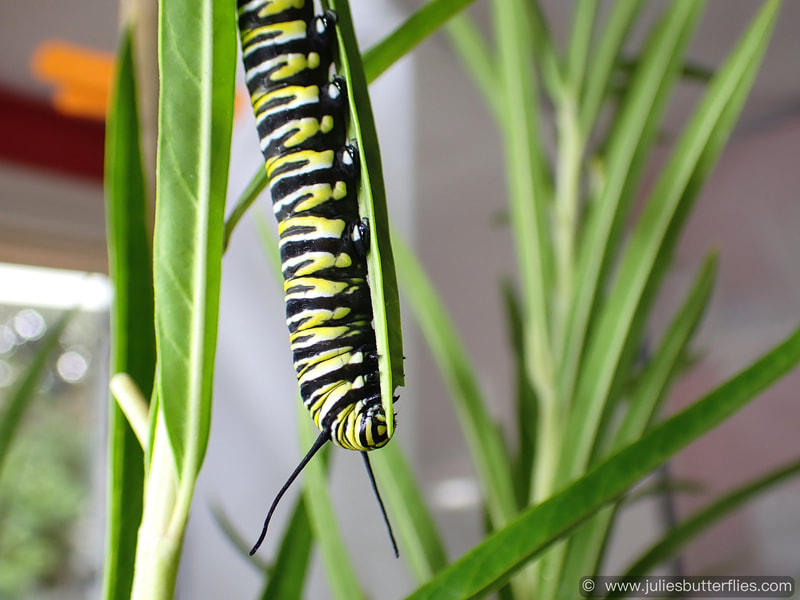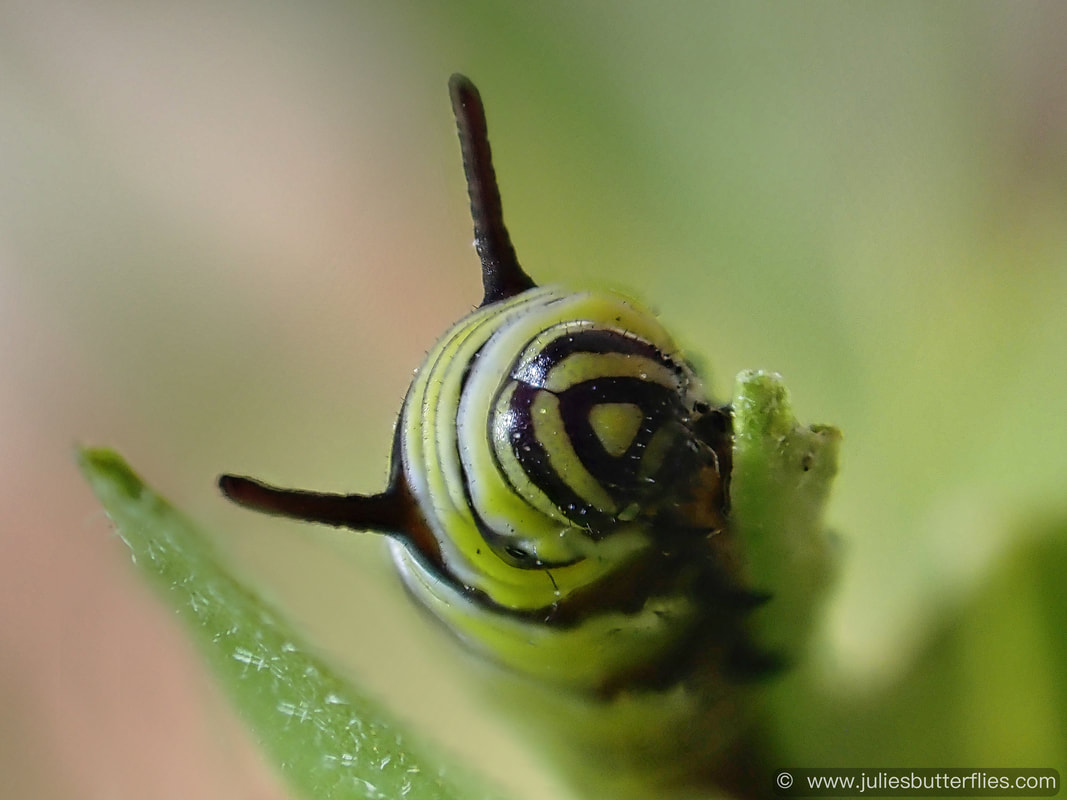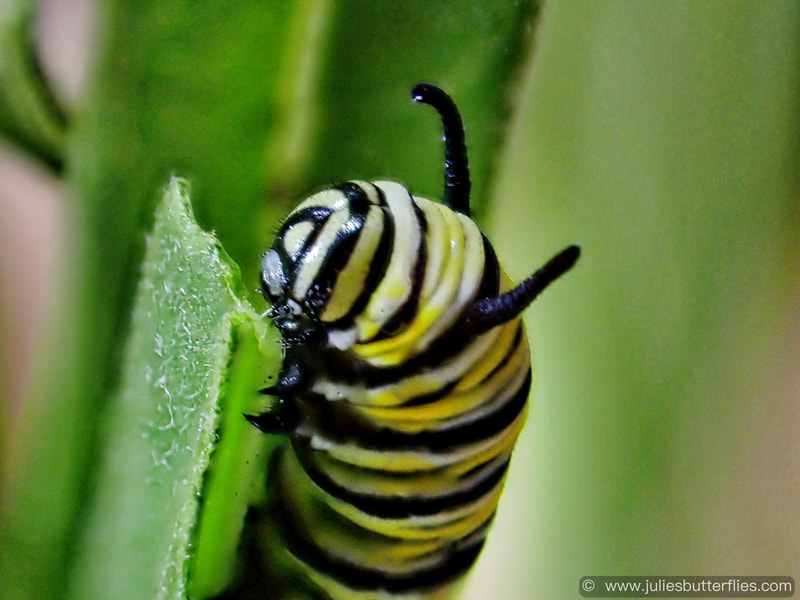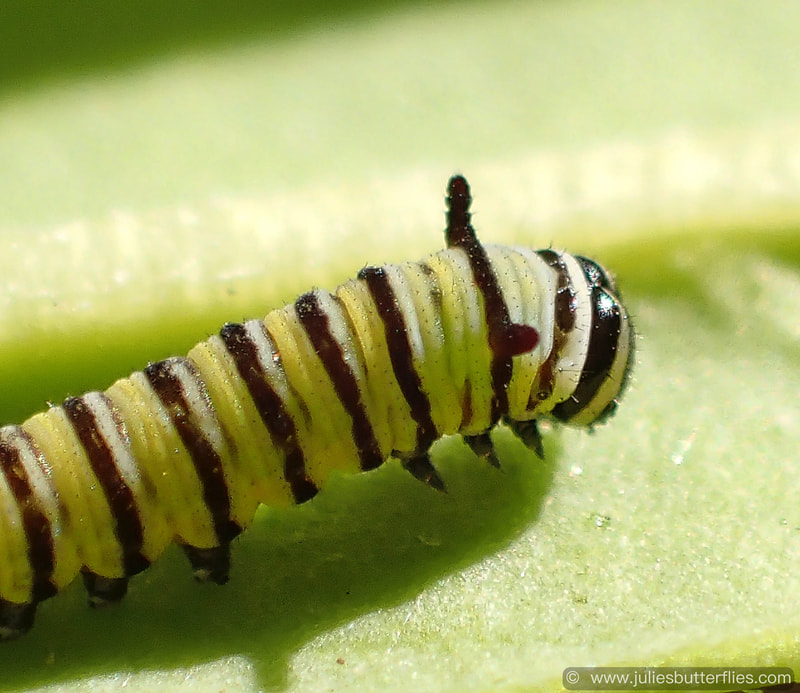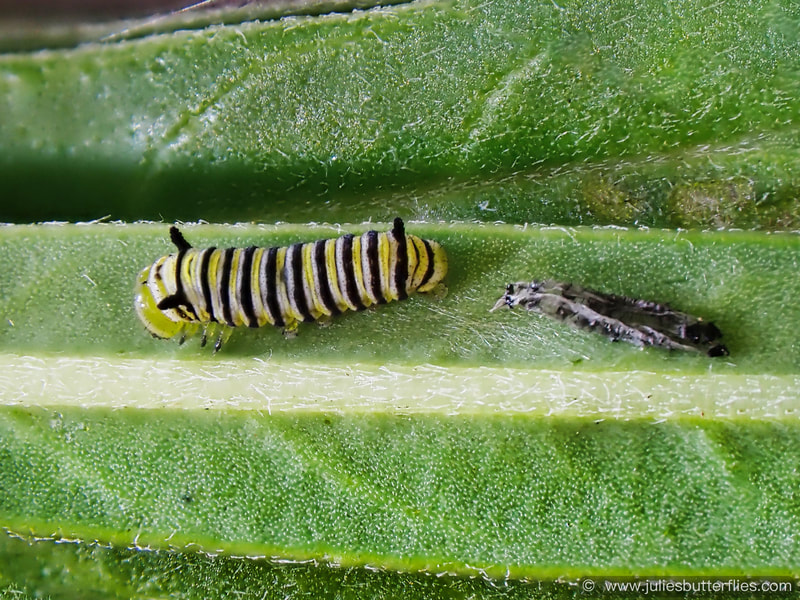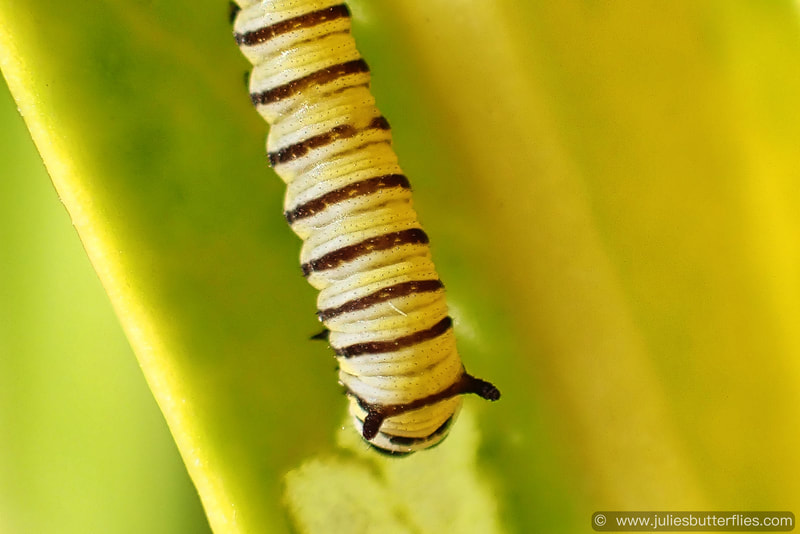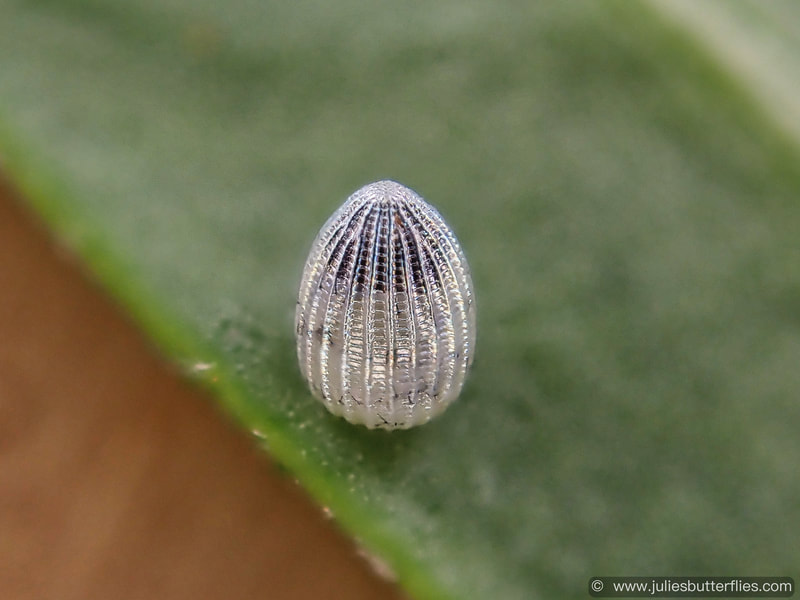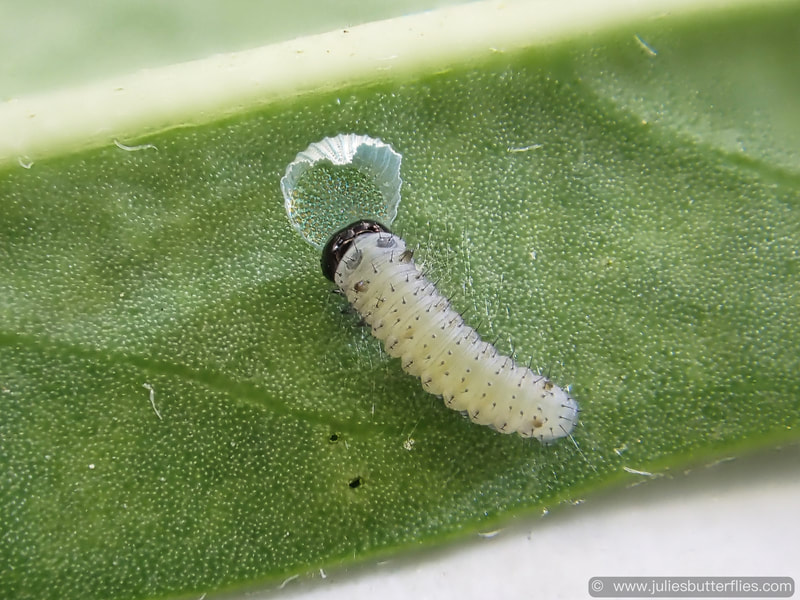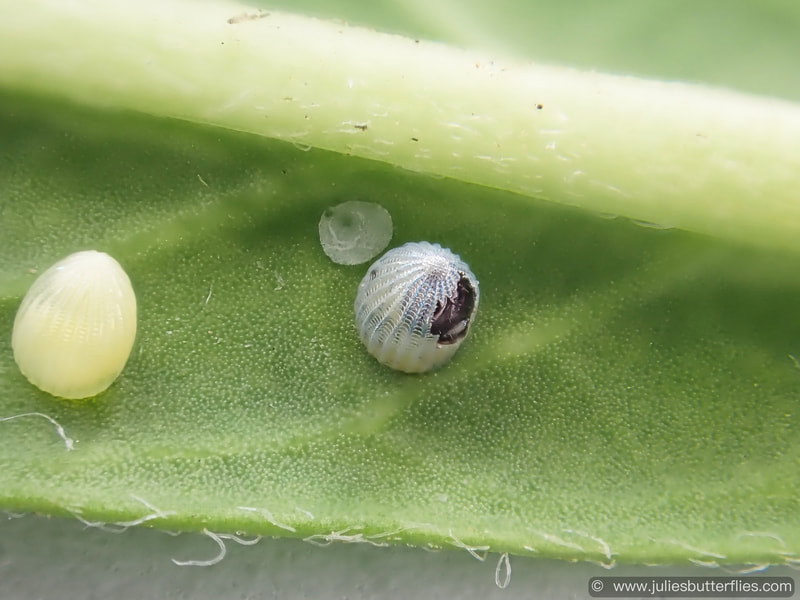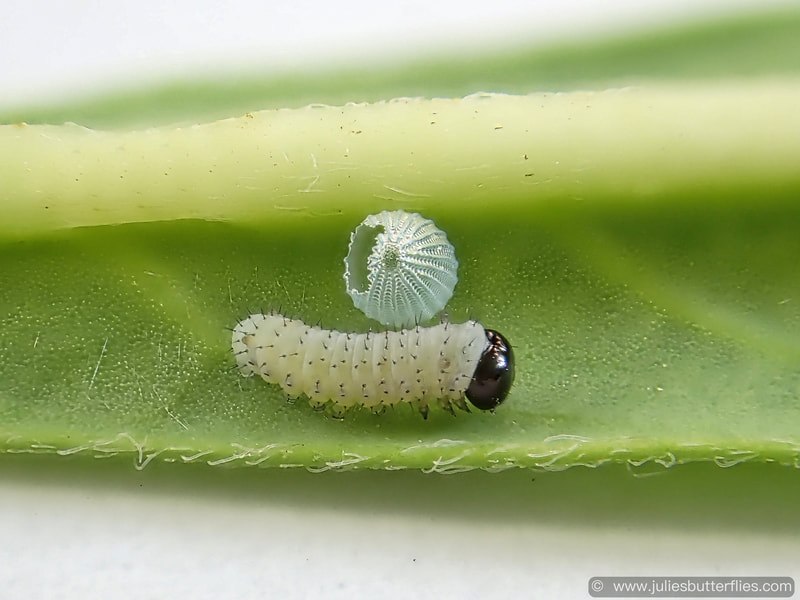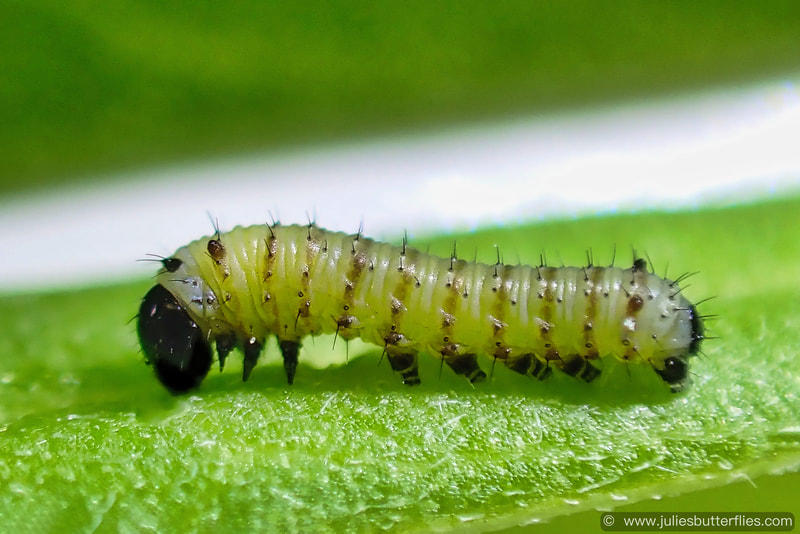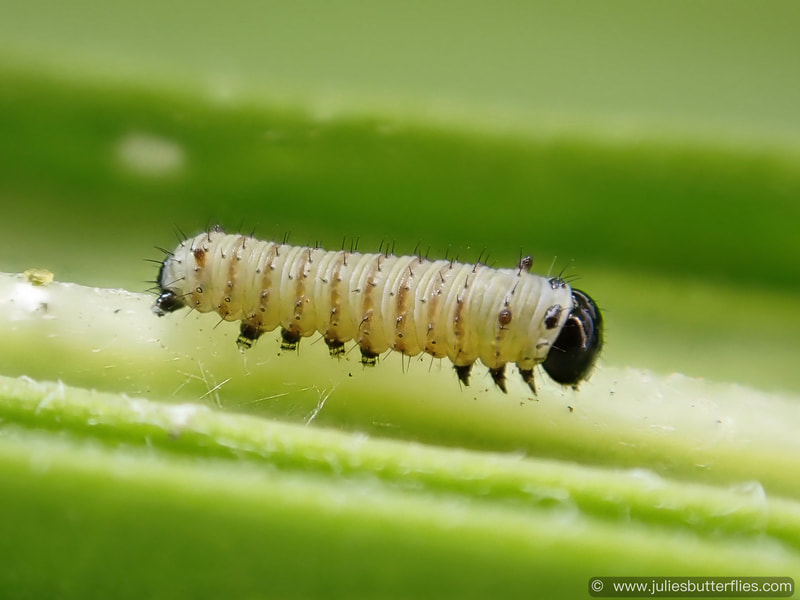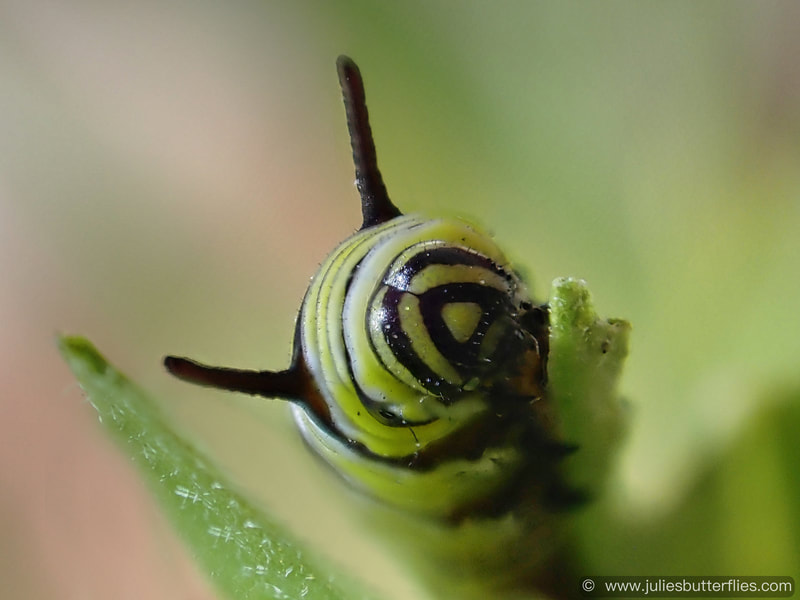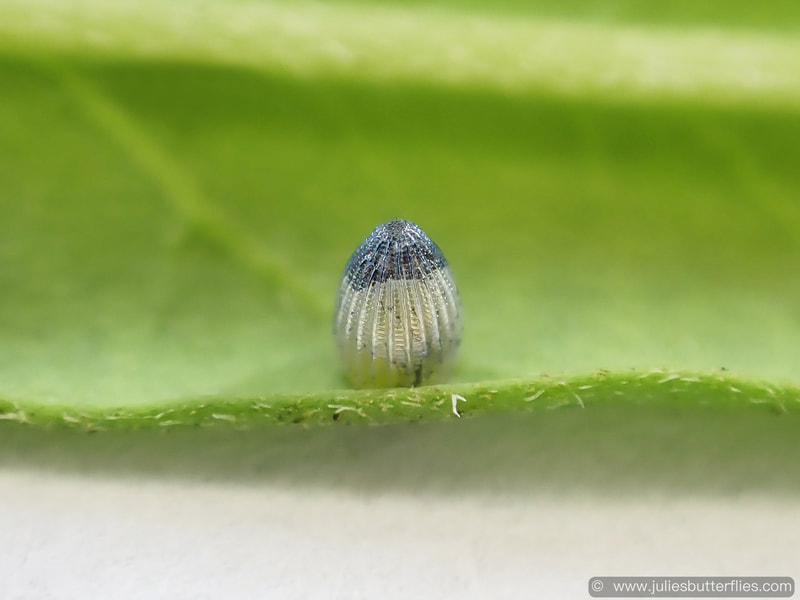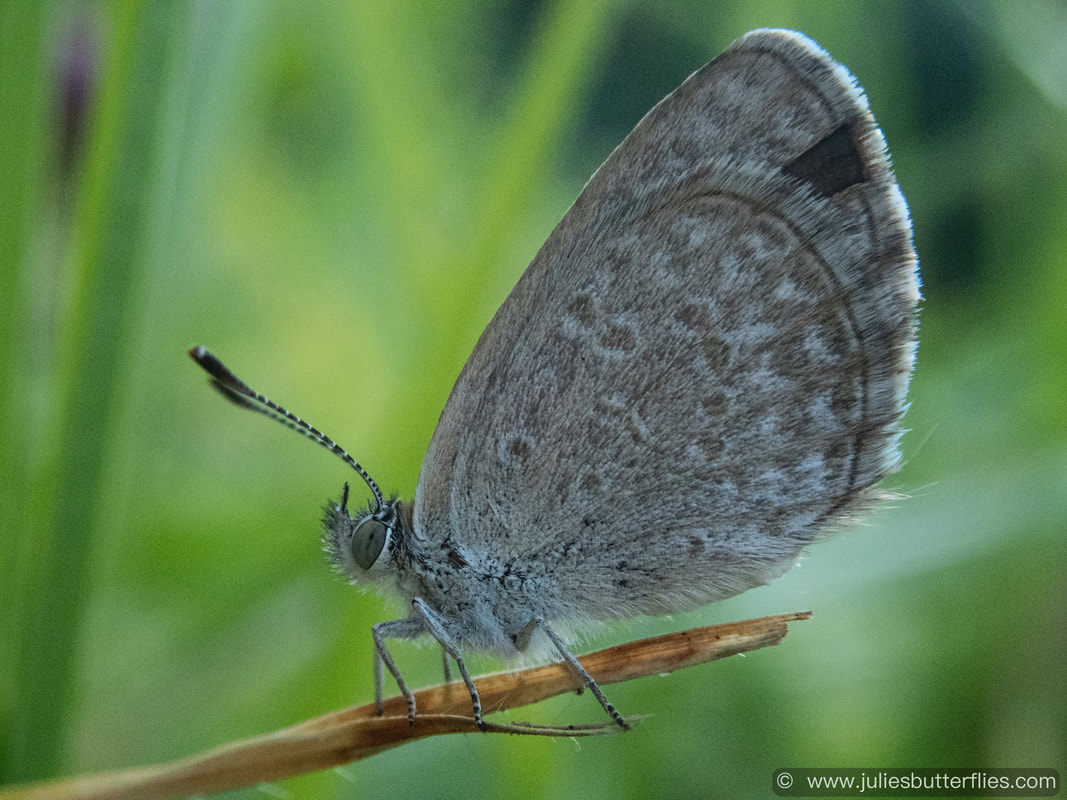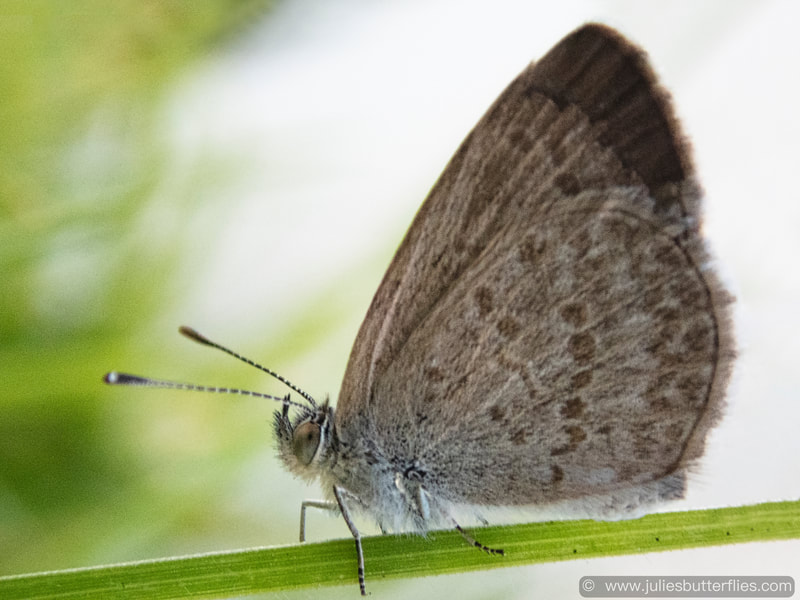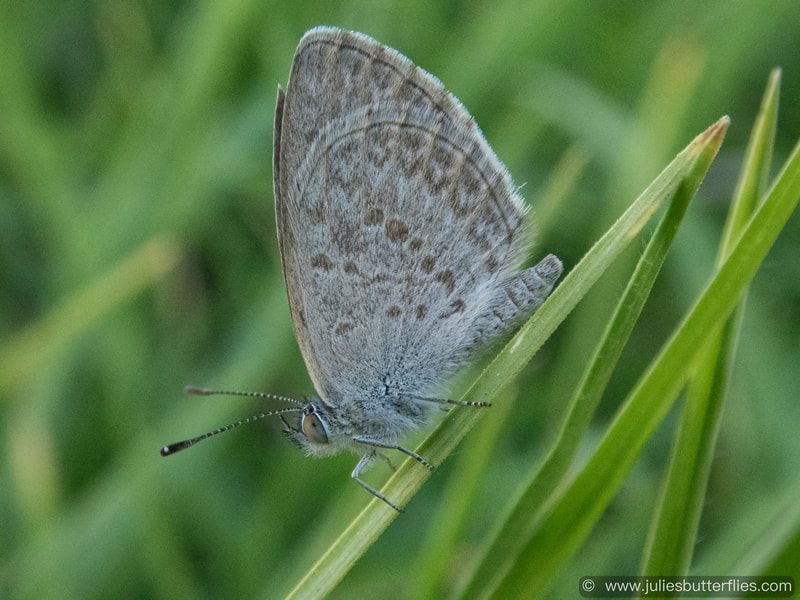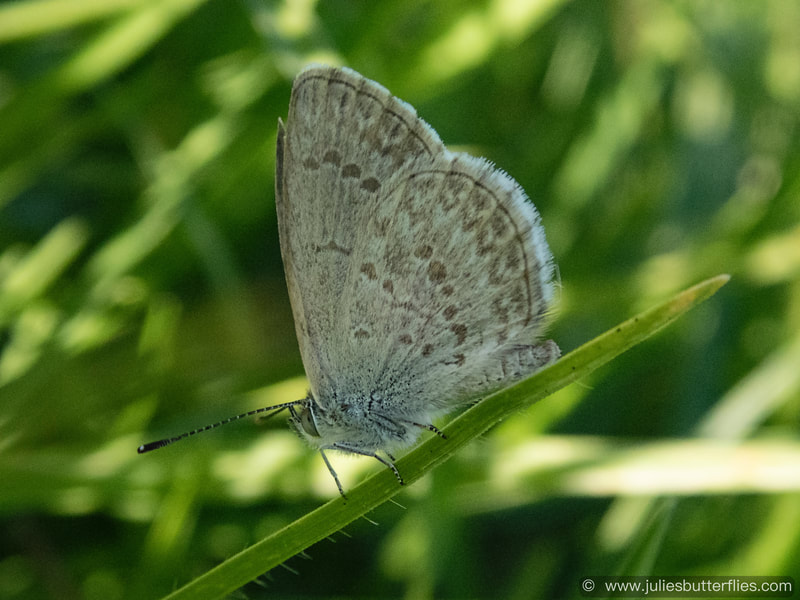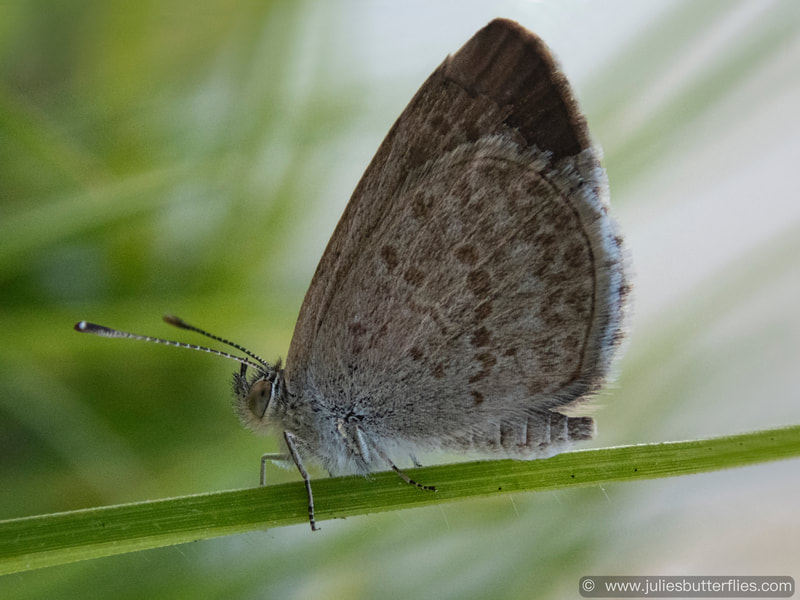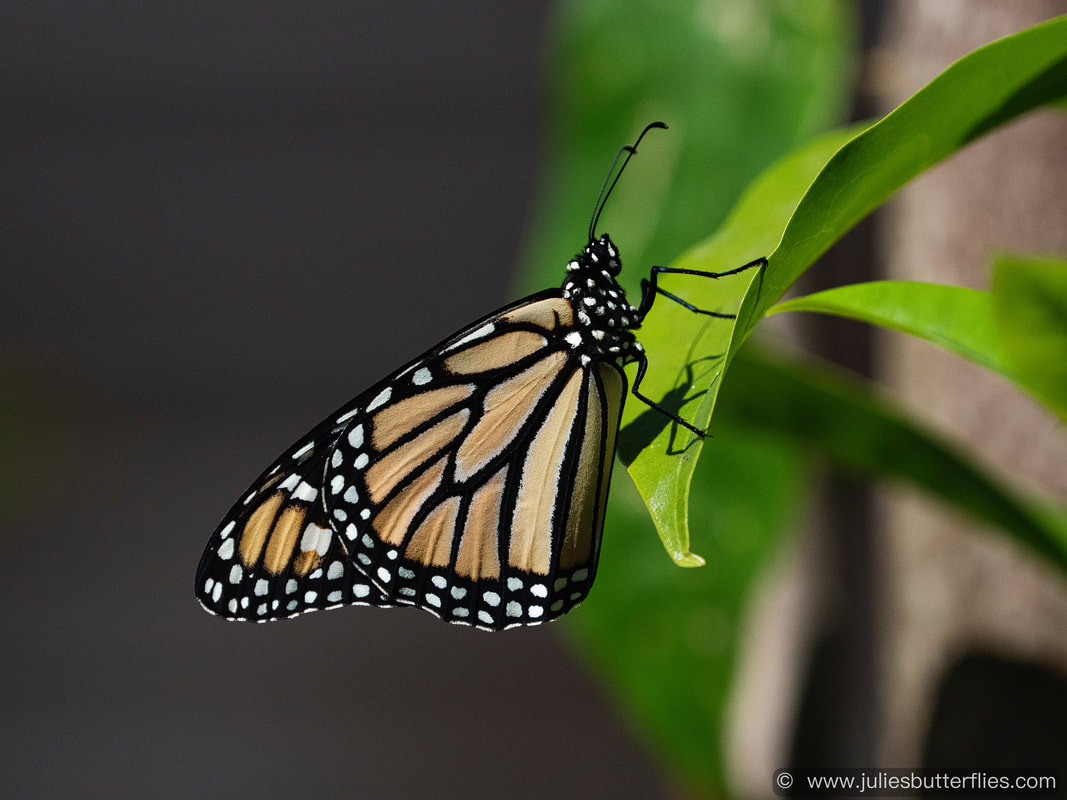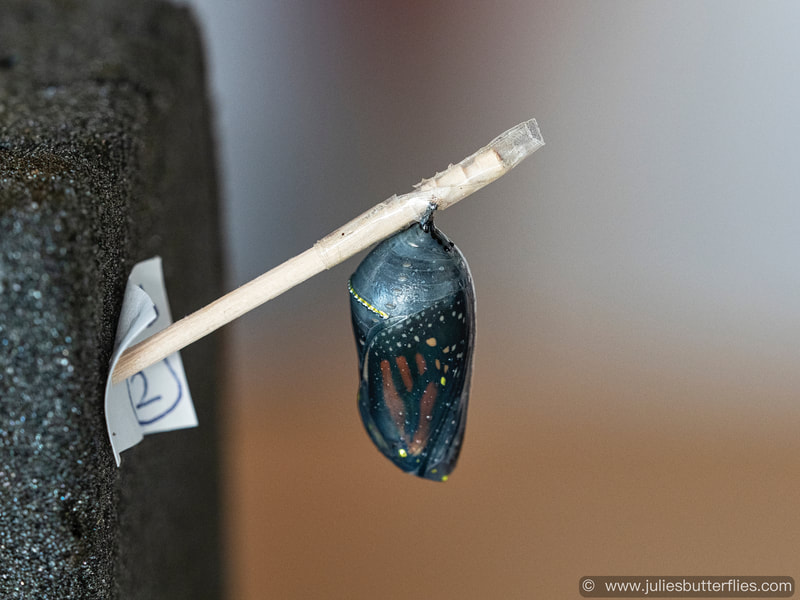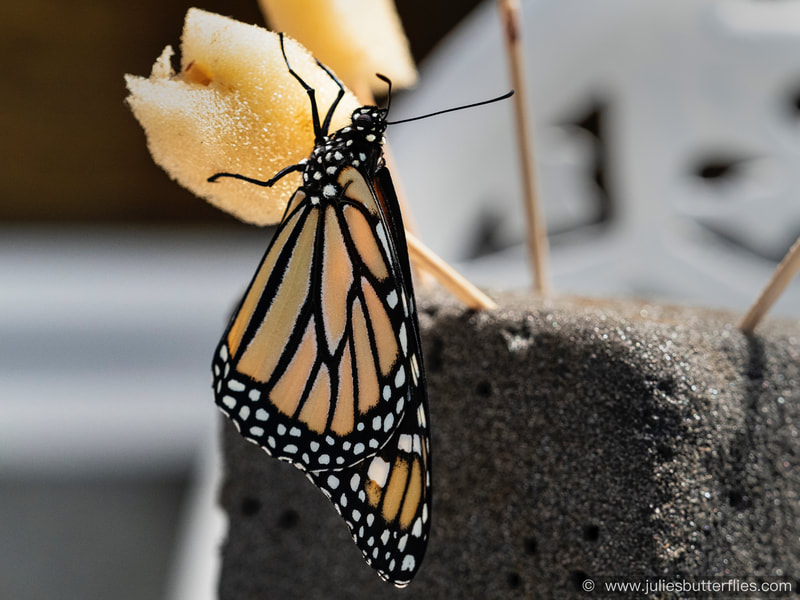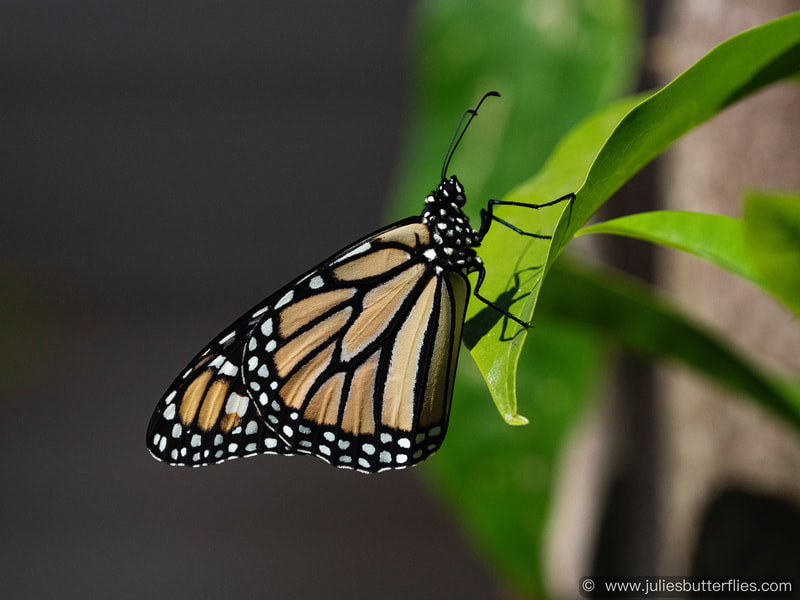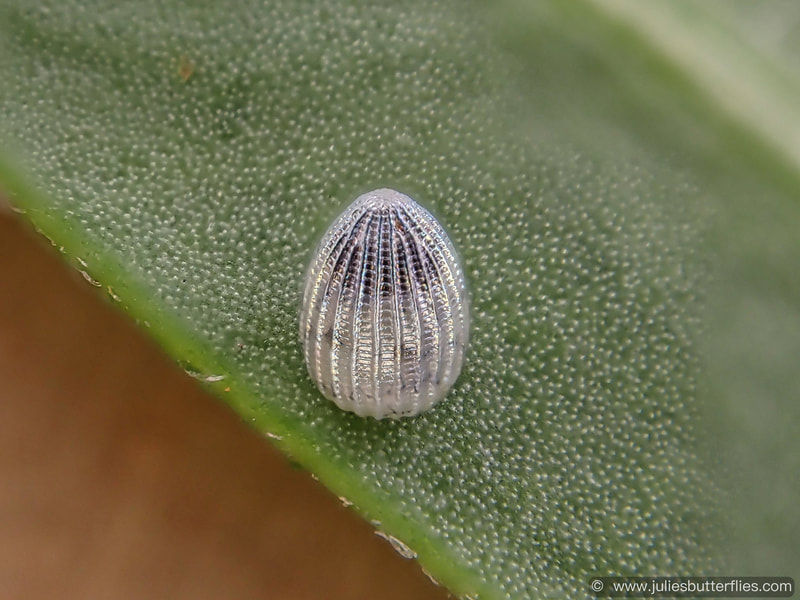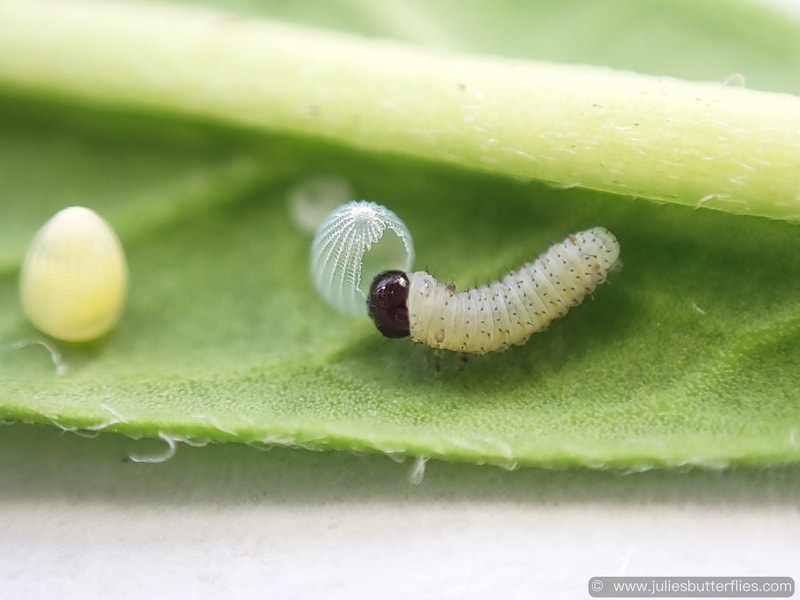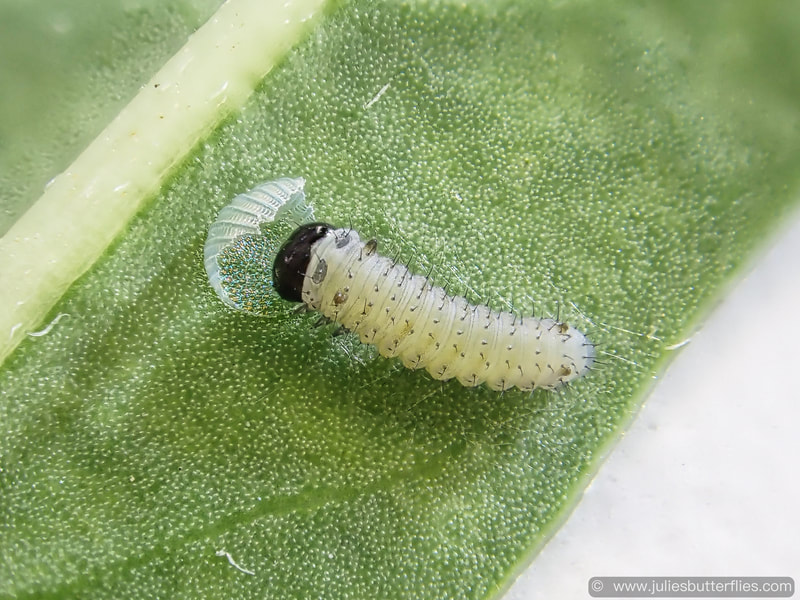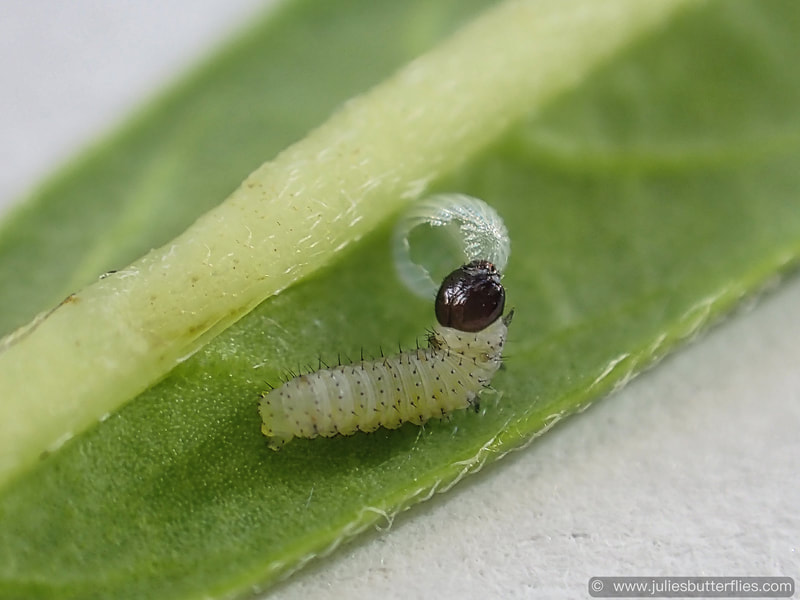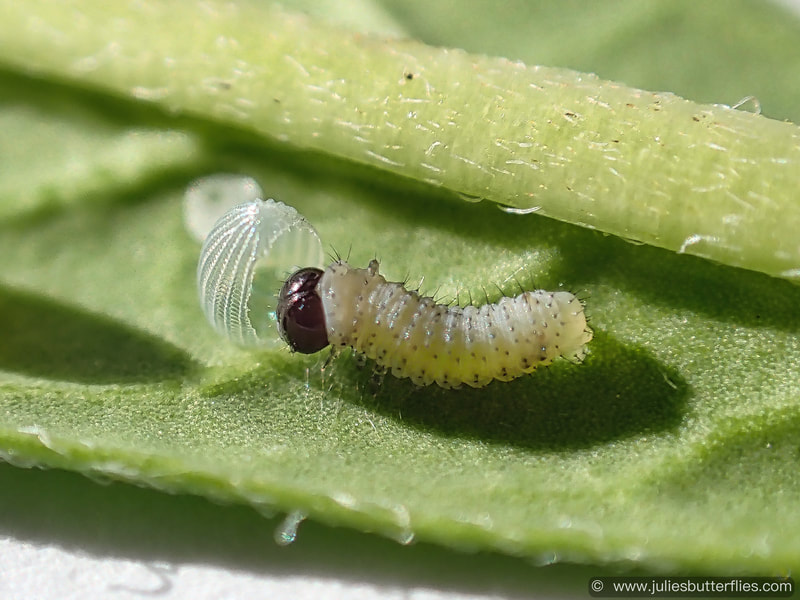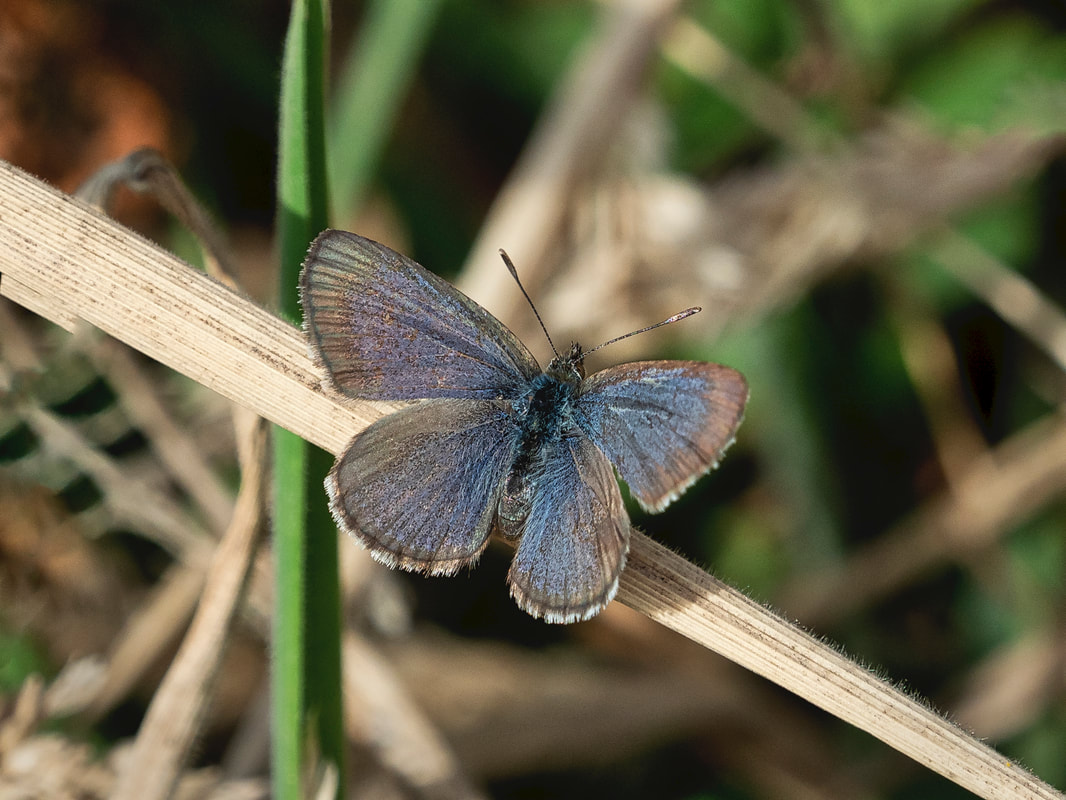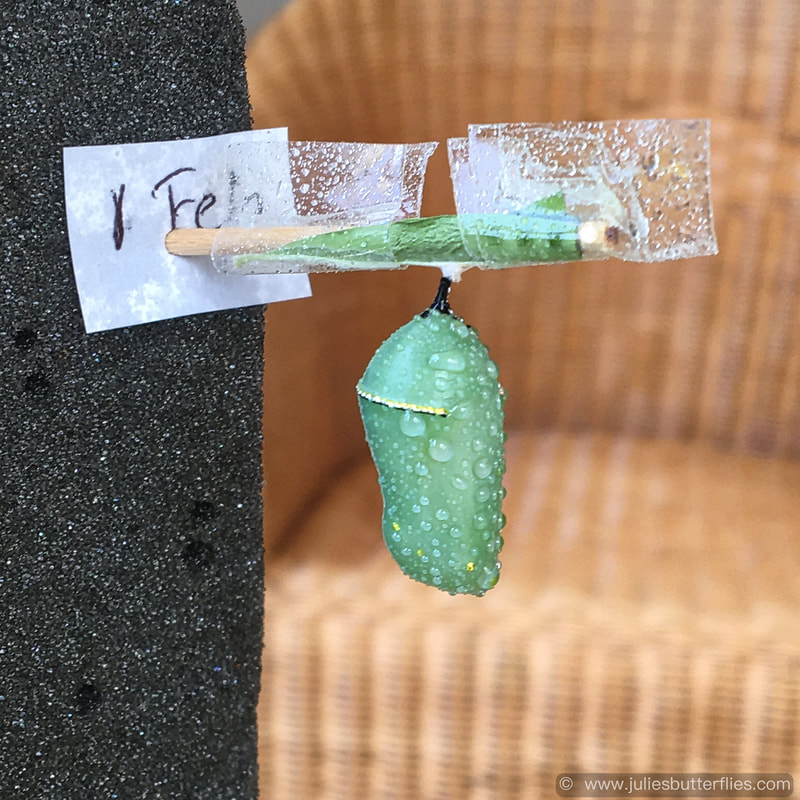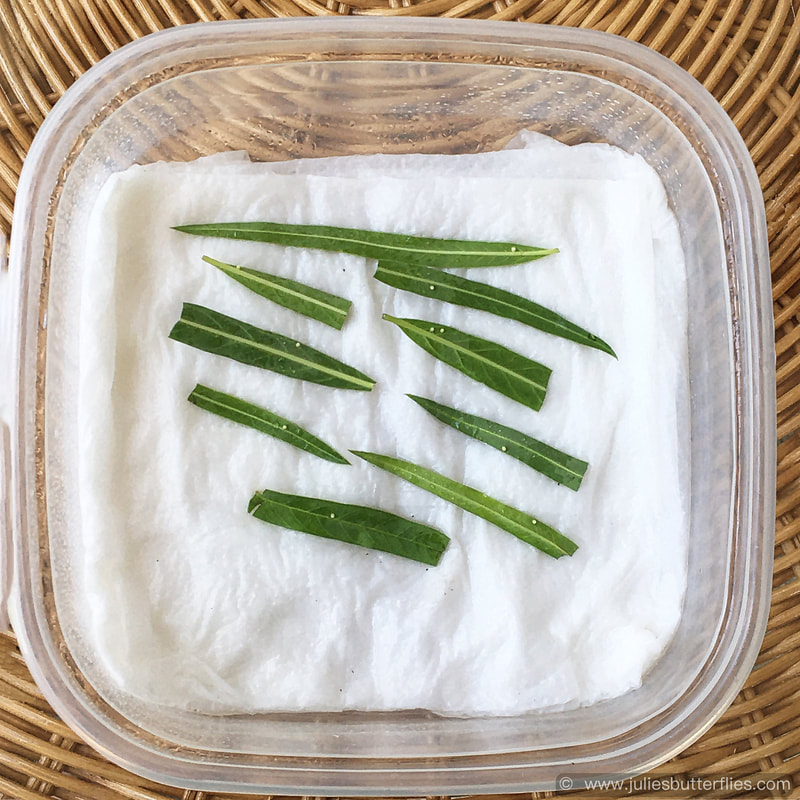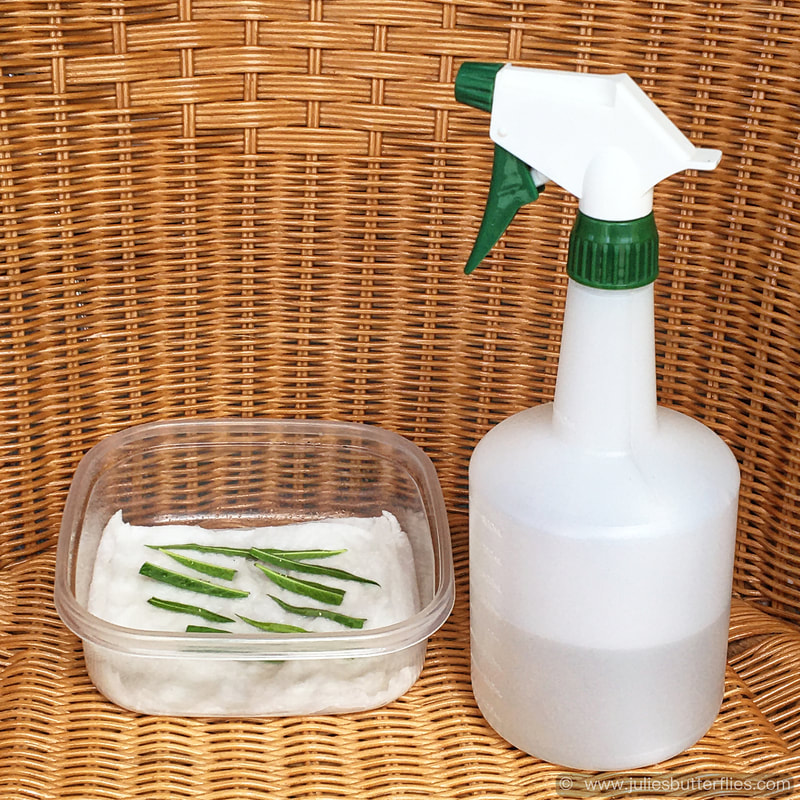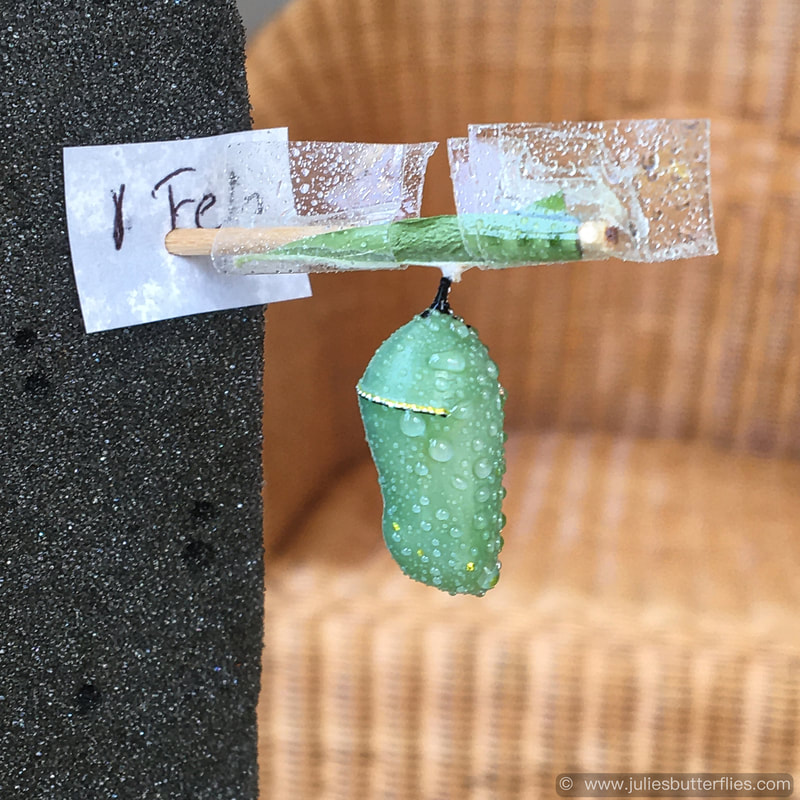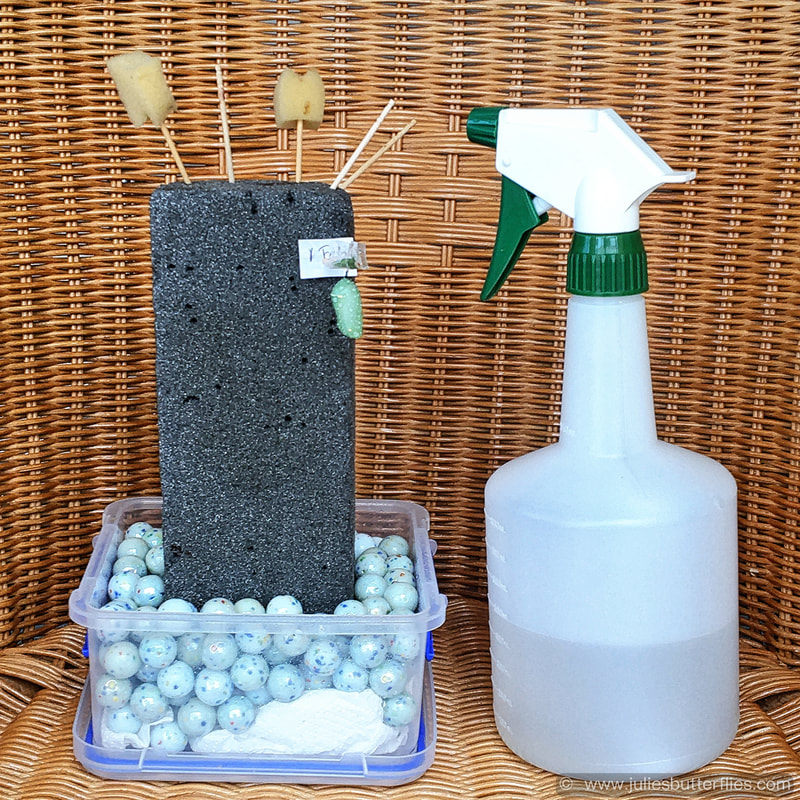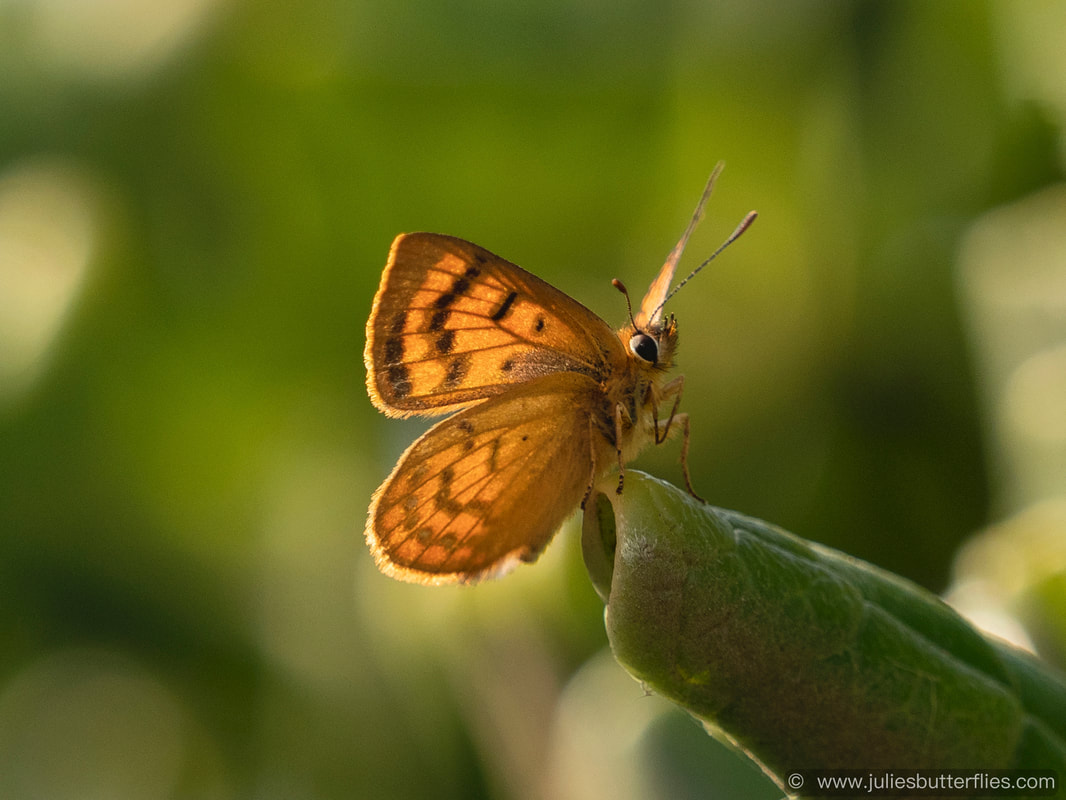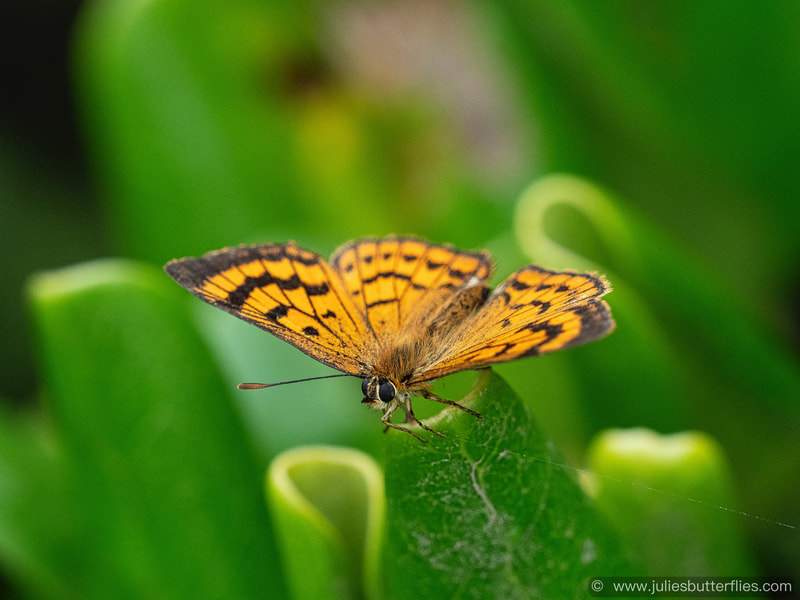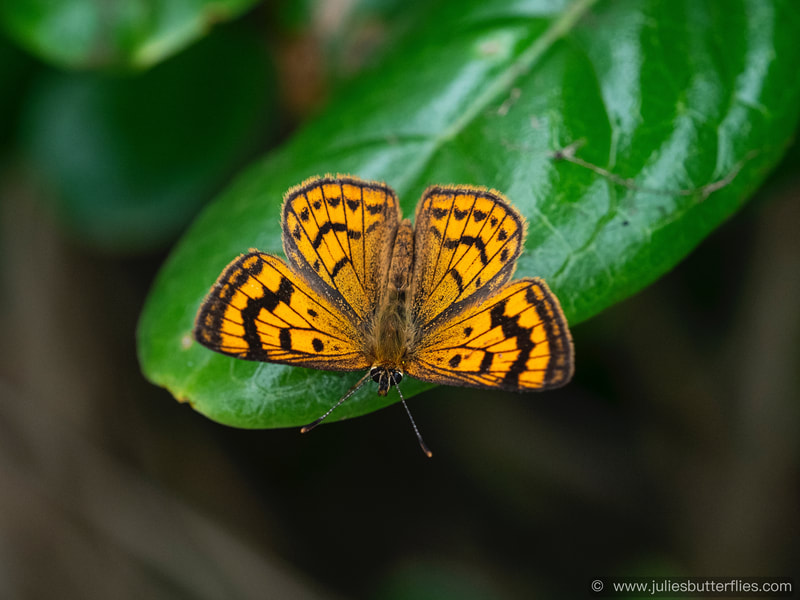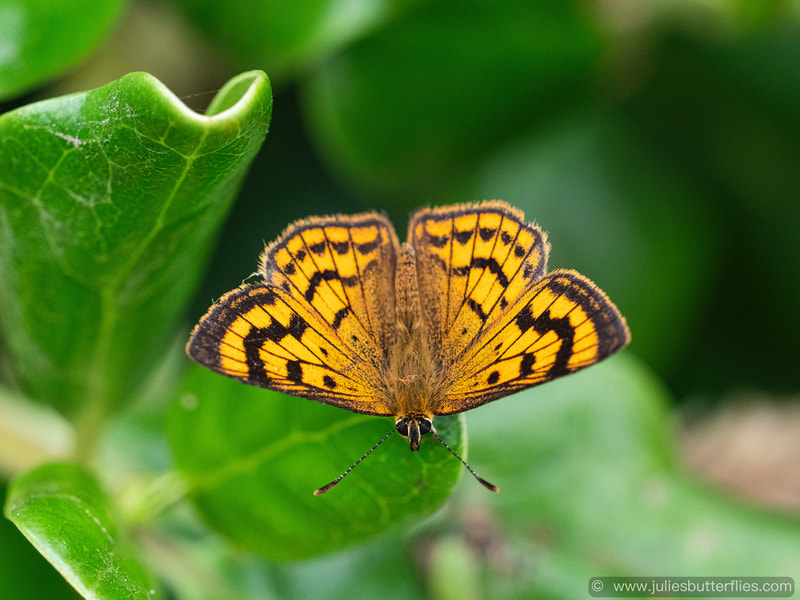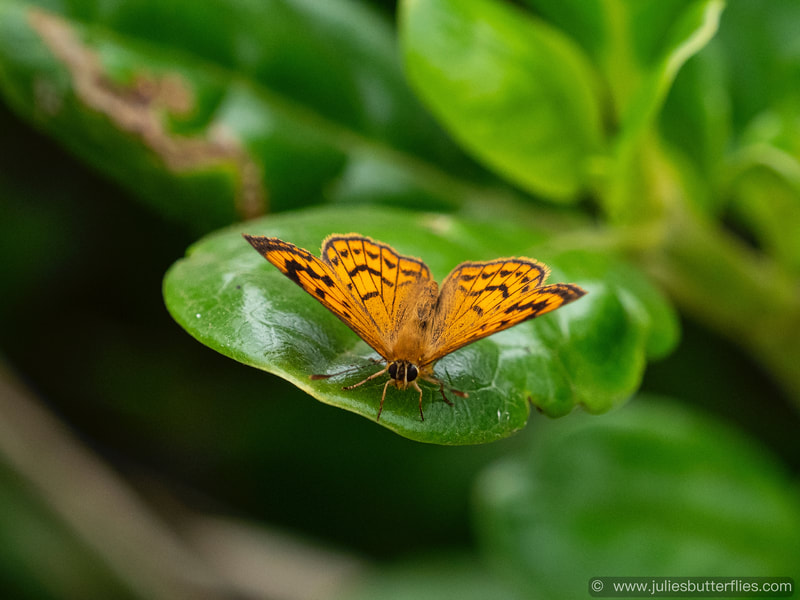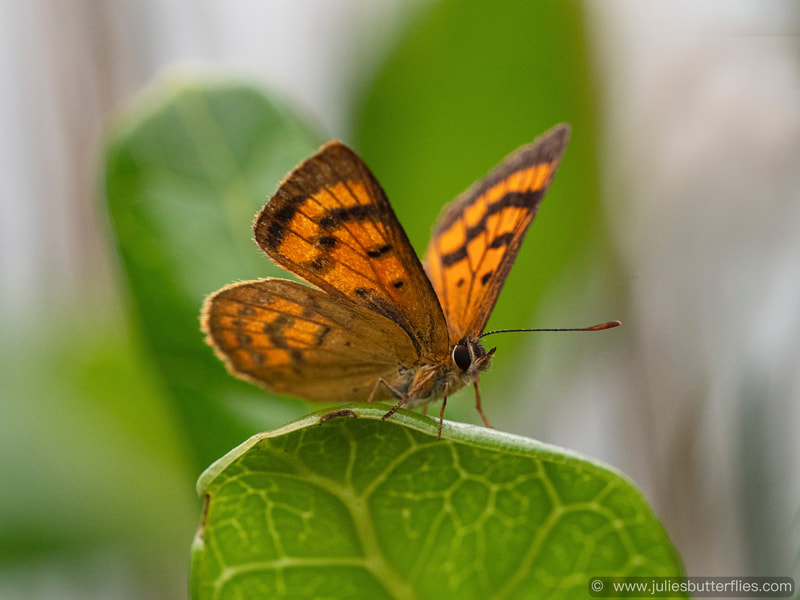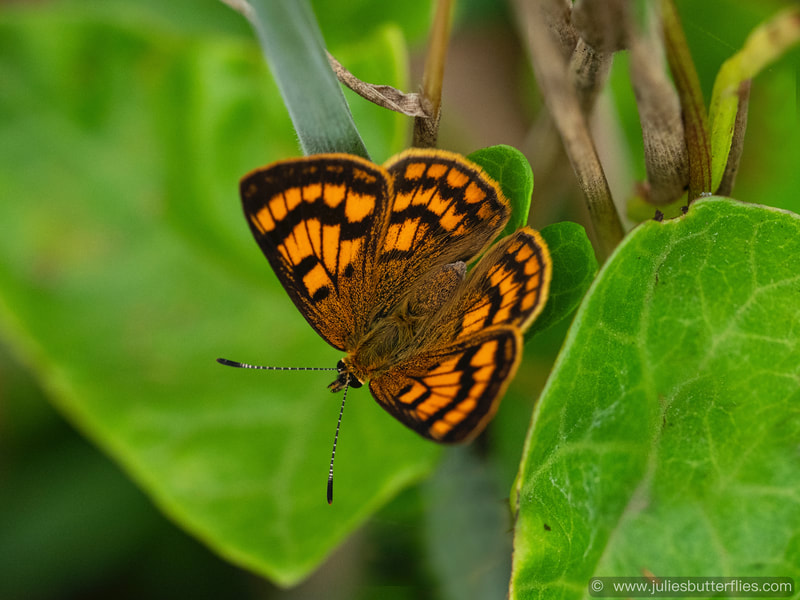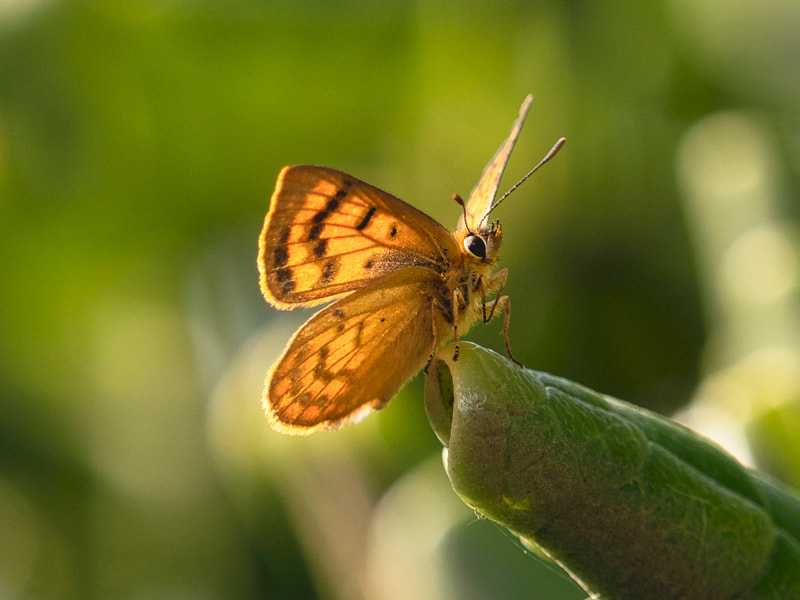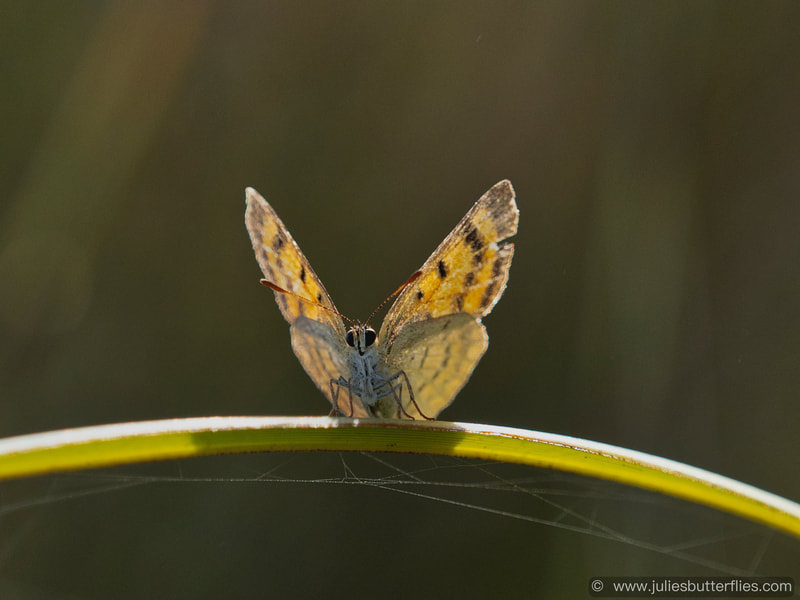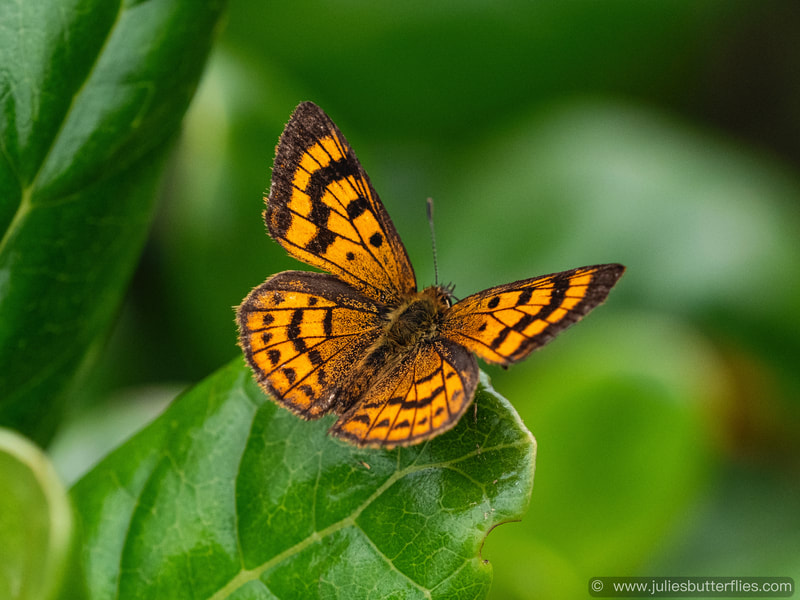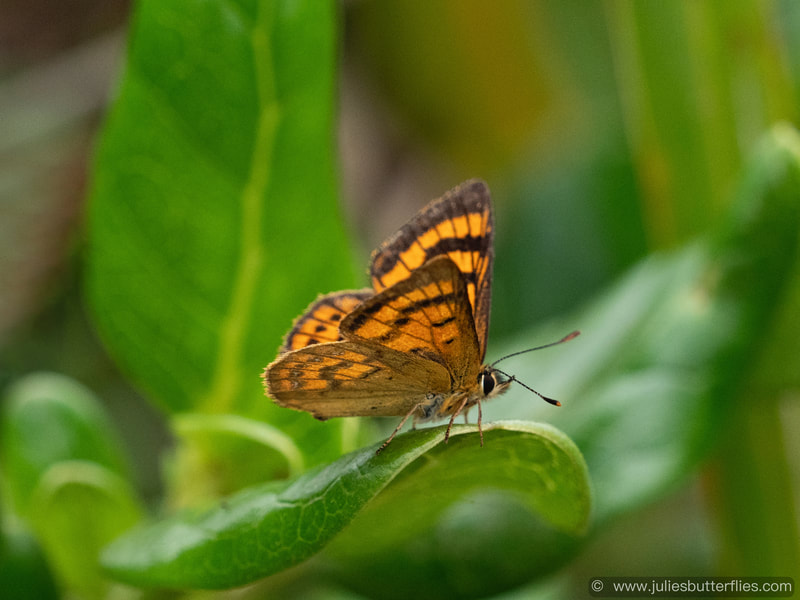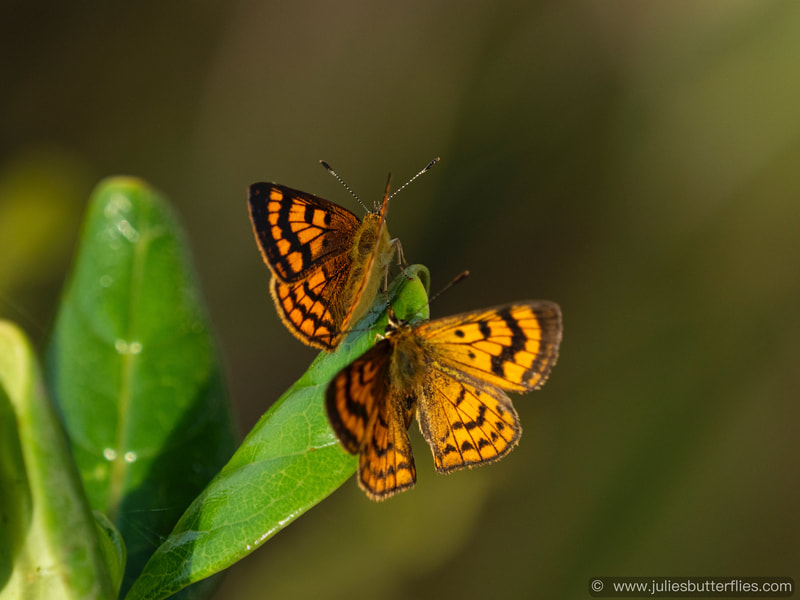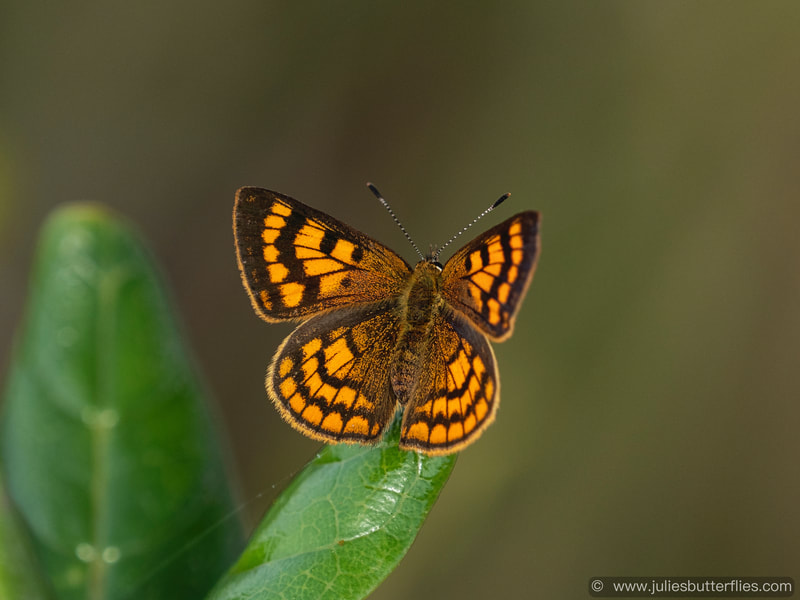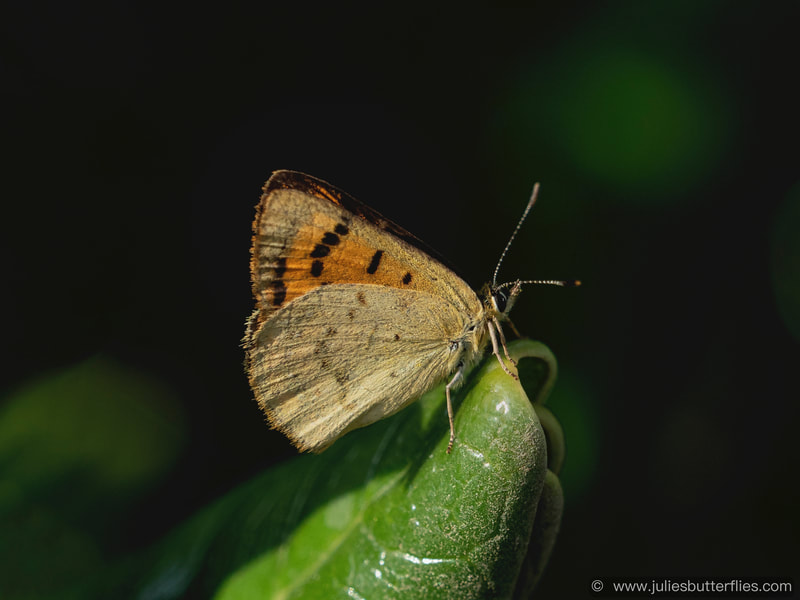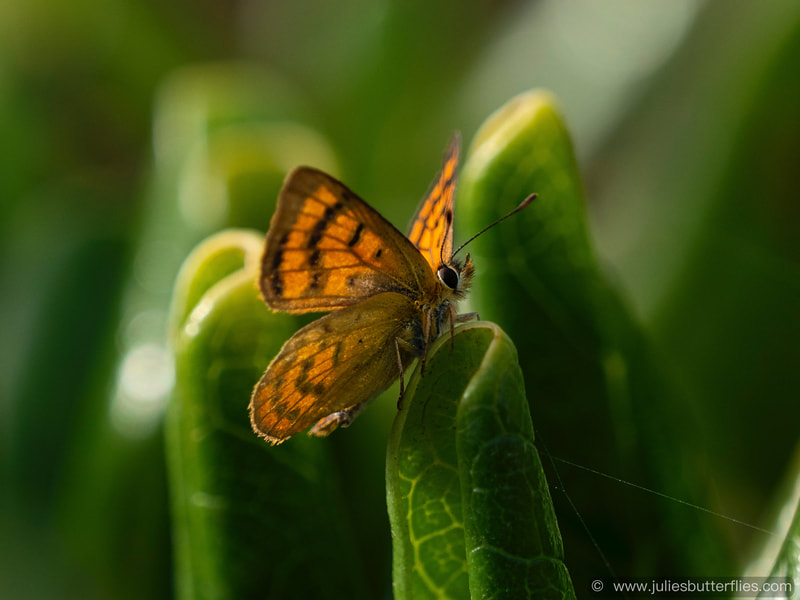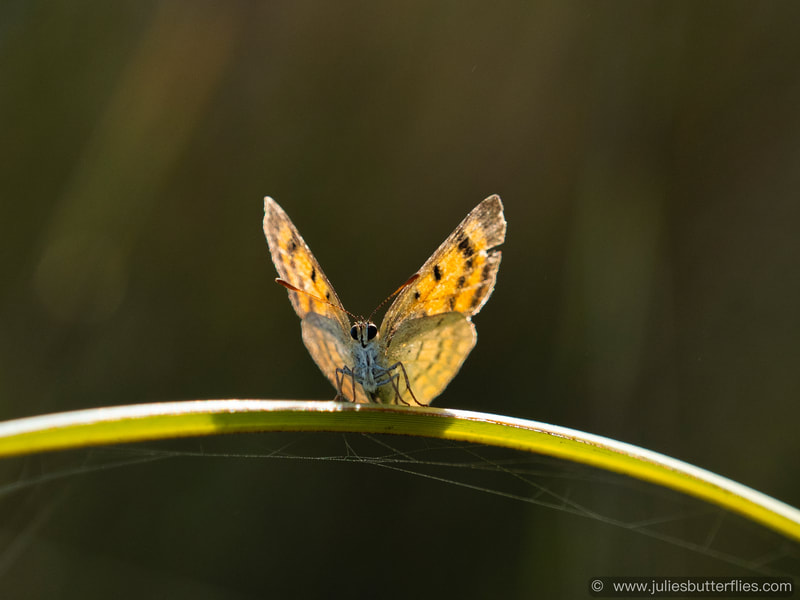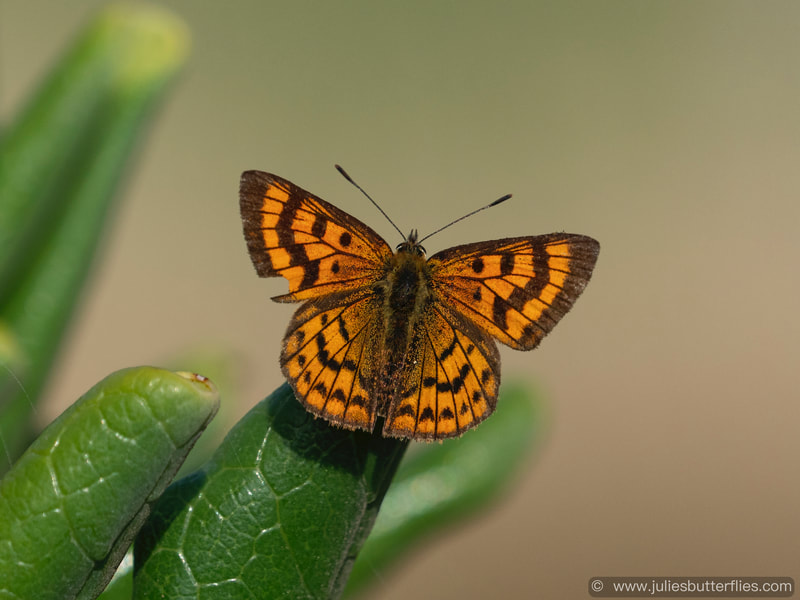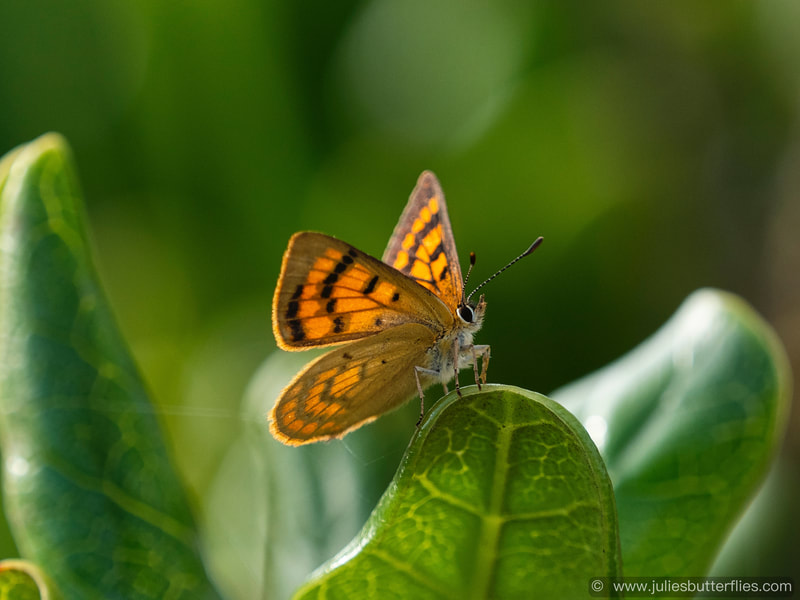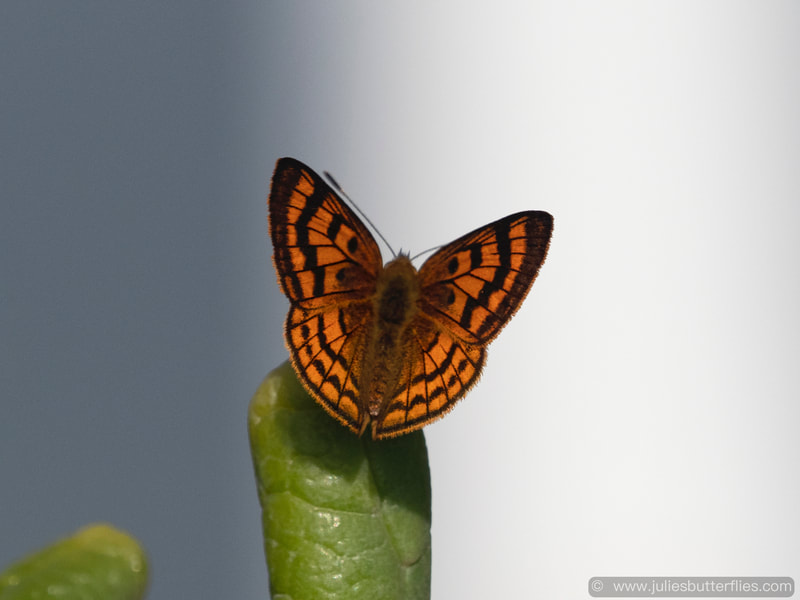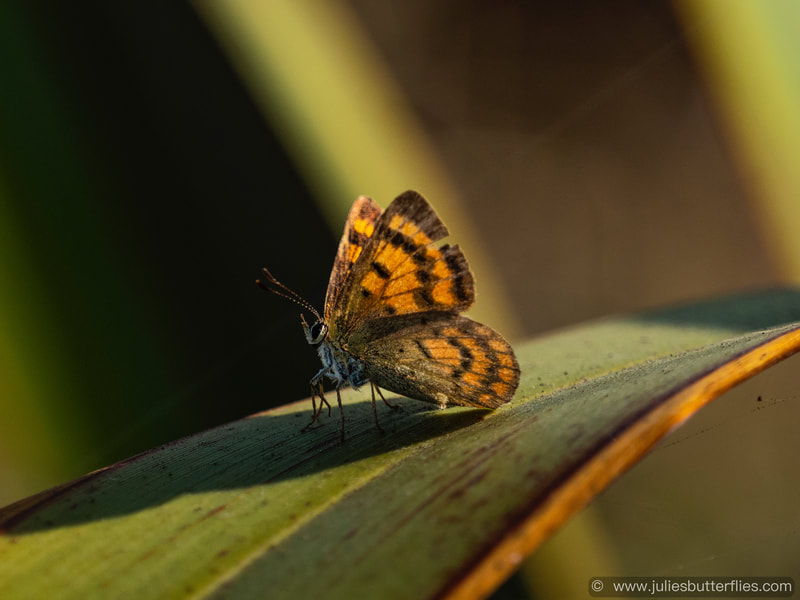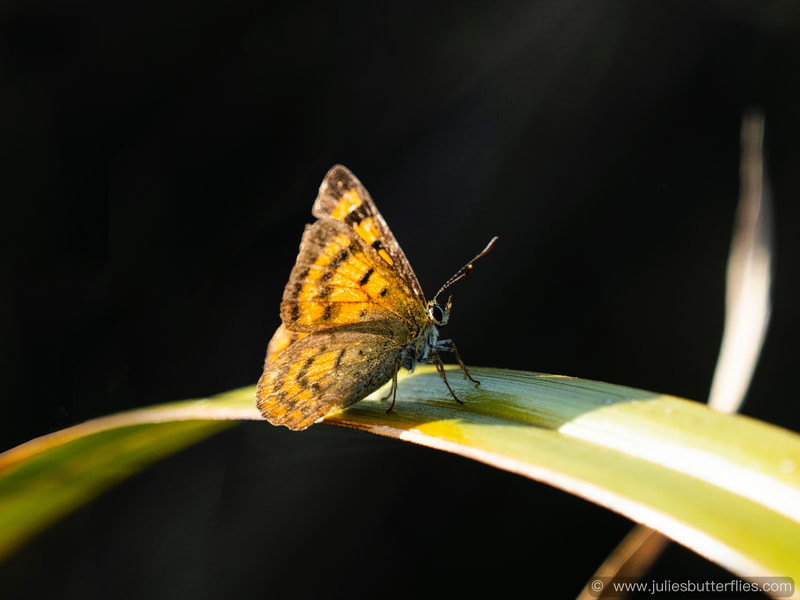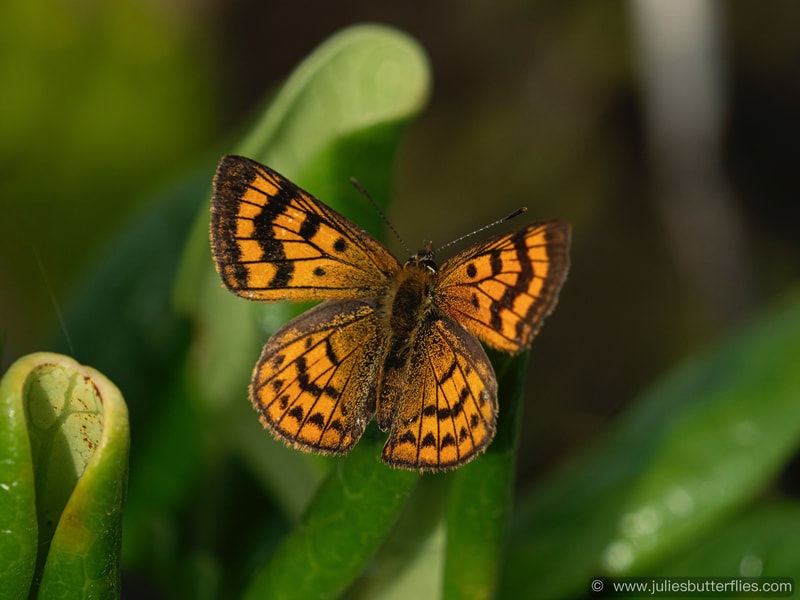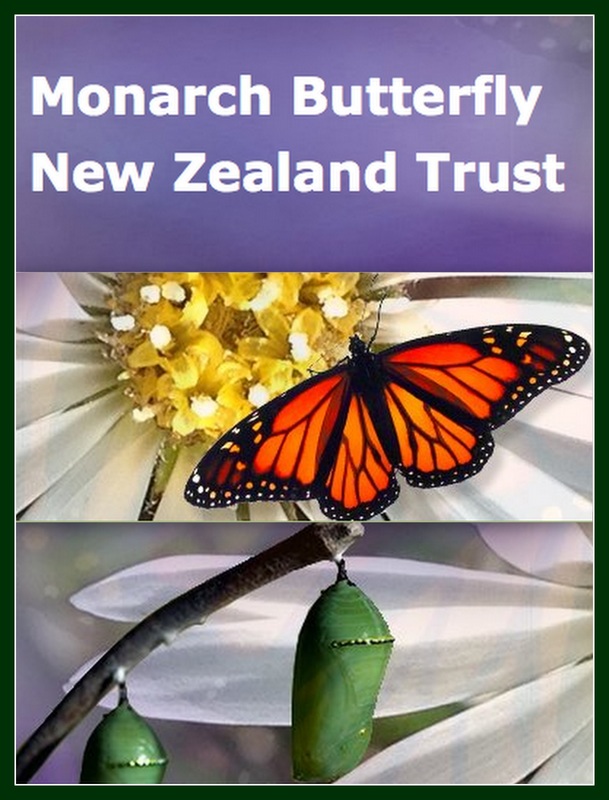See the process in my little video, below. Pretty amazing.
|
Yesterday's 5th instar caterpillar set into its 'J' last night and this morning the transformation into a chrysalis began. See the process in my little video, below. Pretty amazing. They both emerged from their eggs on January 20th and, today, February 20th, they both formed into their "J's" in readiness for creating their chrysalis's. Their voracious appetites for swan plant leaves (milkweed), since shedding their skins going into the 5th instar, was amazing to see. They ate through many plants really quickly. These two have been quite comical to observe. They've been the same size, all the way through. Often, although there were several other plants for them to eat, they would perch on the same leaf and eat until they were bumping into each other. Click on each picture below, to see a larger view. I made a little video, showing the methodical way in which they eat through a leaf. The video has not been sped up - yes, this is how fast they eat. I've been doing some extreme macro photography with my tiny Monarch Caterpillars.
They are now in the 3rd instar, so are still quite small (about 15mm long). Unfortunately they're not so good at posing for the camera and keep wriggling, so getting a clear shot can be a challenge. I've set up a tall rig, to ensure I can get the camera up close to the caterpillars, yet keeping the camera steady when I take a shot. I'm using an Olympus Tough TG6 camera which has the capability of microscope photography, while allowing for the lens to be placed to up to 10mm from your subject. The camera also hooks up to an Olympus phone app, using Bluetooth, which allows you to control the camera remotely (it's a magic little camera). So here are just a few of the macro pics I have taken recently. You may have seen some of them in previous posts, but I thought they might be good to see again. Bear in mind these are all pictures of really tiny caterpillars. The details are quite mesmerising, don't you think? Click on each picture, to see a larger view............. Late yesterday afternoon we went for a walk around our area. For years there has been a short stretch of roadside grass, down a bank, where Common Blues (Zizina otis labradus) and Long-tail Blues (Lampides boeticus) could be readily seen. Two years ago an over-zealous resident began cutting the roadside grass and then kept it short. All the blue butterflies disappeared. Perhaps the resident has sold up and gone, because tonight we noticed the grass had grown longer and, yes, there were blue butterflies. Not many, but perhaps they will increase in time. The one Long-tailed Blue I saw, gave me the slip, but I get a few shots of several Common Blues. Yay 🦋 At last we have a Monarch 🦋🦋🦋 In our little spot, in the Bay of Islands, New Zealand, we've barely seen any Monarch Butterflies this season and we're more than half way through it. About 3 weeks ago one came swooping into our garden, laying her eggs on a few of my swan plants (milkweed). As I mentioned in a previous post, I put those first eggs under cover outside because we were on the verge of going away. When we got back two had grown to 5th instar stage and, within a day, had formed their chrysalis's. At that stage I brought them into the house and the countdown began. Yesterday morning, after 9 days in the chrysalis, this beautiful lady emerged quite perfectly. She spent the day sorting herself out then, at about 4pm, flew off to her butterfly life. Click on each picture, to see a larger view................ If you've seen some of my recent posts you'll know that, although we are well into our butterfly season in New Zealand, until a few weeks ago we'd not seen a single Monarch butterfly in our garden. But all it took was a single Monarch flying through and laying her eggs on the milkweed plants, and the process started. I have now raised two caterpillars outdoors, under the mosquito net enclosure structure, and these are now in chrysalis stage. Then I took eight other eggs and brought them indoors to raise. I did this because the ants and wasps are quite rampant at the moment, being the worse predators of Monarch eggs and caterpillars. Today five of the eggs hatched and I was on the spot to see them and photograph their progress. Beautiful, aren't they? 🐛
COMMON BLUE (Zizina otis labradus) is probably New Zealand's most common butterfly, originally wind blown over from Australia. When visiting Cape Egmont, Taranaki, last week I came across a lovely group of about 20 of them, along the coastline, enjoying the last sun's rays of the day. They were still somewhat active, but when they landed on the grass stalks they remained still for enough time for me to get reasonable photos. The flight pattern of the Common Blue is very zig-zaggy and flicky, so it's not easy to get a shot unless they're still. The pristine condition of this group was heartening. The New Zealand Common Blue is a small butterfly up to 23mm wingspan. It has an erratic fluttering flight and usually flies closer to the ground to be near a food source. They lay single eggs which hatch in a matter of days. The eggs are laid on leaves, stems, flower buds and young pods of food plants, chiefly legumes of the Fabaceae family such as clover, Birdsfoot Trefoil and various native species. Newly hatched larvae eat small holes from young leaves or flower buds, and later feed mainly inside flowers. In the far north area of New Zealand, where I live, the butterflies have been slow to show themselves this season. As I explained in my post of January 10th, when a Monarch Butterfly finally flew into our garden, we'd not seen any butterflies until then (we are usually seeing them in November). Now a Monarch butterfly is coming every day but, mind you, there's only one butterfly when in previous years we've had several. But then it only takes one and this girl is certainly doing her job well. She first laid eggs on January 10th and so I placed 4 eggs under cover, to protect them while we were going to be away for a week. When we came back there were two fat caterpillars on the covered plants, but sadly not four (possibly two were infertile, or the ants got them - other predators couldn't get into the enclosure). Yesterday the two fat caterpillars formed chrysalis's, so I've removed them from the plant and brought them indoors where it's cooler. Unfortunately our temperatures are very high at the moment - 32C (90F) and we have had no rain since well before Christmas. Since being back I have collected more Monarch eggs and brought them indoors. I've done this so that I can keep them cooler, because it's so dry and hot outside. I'm also spraying them with a fine mist of water, a couple of times a day, otherwise their skins may become dry and they might not easily emerge from their respective skins (egg, caterpillar or chrysalis). I have seen butterflies unable to break open their very dry chrysalis skin and have died not able to get themselves out.
Click on each picture, to see a larger view............. We've just spent a few days in New Plymouth. To my delight on a trip to a coastal lighthouse there, in the foliage right beside the sea, was a small colony of Coastal Copper Butterflies and also a colony of Common Blue Butterflies. This post will focus on the Coppers. There were perhaps a dozen or so, just in one small area we looked at - bright, perky and beautiful. The surrounding vegetation included the butterfly's habitat plant Muehlenbeckia, Coprosma robusta and a variety of course beach grasses. Right on the west coast, it was a particularly windy spot, however the butterflies are clearly managing there just fine.
We were there late in the afternoon, which is the time when butterflies begin slowing down for the night and spend all their time sitting with wings wide, taking in as much last minute sun as they can.
I have to say, they were just so beautiful to see. Wow and super wow. Click on each picture to see a larger view.......... |
AUTHOR
Julie Vause
Opua, New Zealand. Keen butterfly photographer and raises Monarch Butterflies for release. " I'm crazy about butterflies and enjoy sharing the beauty and wonder of their transformations." VIDEO
Monarch Caterpillar emerging from egg
Click on video to enlarge
SITE VISITORSUNRAVELLING MONARCH MYSTERY
FRIENDS
NEWS ARCHIVES
September 2023
Member of......
|

